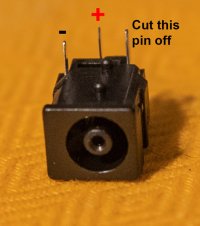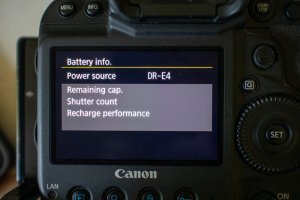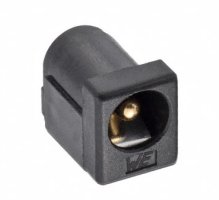Ok everyone, my connectors from Digikey finally came in the mail. So here's the rundown of how everything worked.
First, the connector that I linked to in the first post is indeed the correct connector to plug into the Canon DR-E6 DC coupler. So again, this connector is commonly known as a JSBJ4, but the specific part number for the connector I ordered is the Schurter 4840.2221. Here's the connector I got. Also note that they make a similar connector that has a solder tab on the back, but while it plugs in the same, the housing it's in is larger, and it seems like it's made to be mounted in a panel. I thought this would work fine for my uses.
(These pics are not spectacular, but I'm not trying for pro-level macro photos here.)
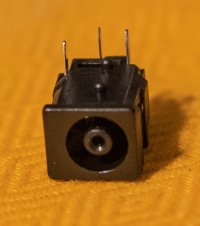
Here it is plugged into the genuine Canon DR-E6.

And here is after I cut off the end of my cheap third party AC adapter (8V at 3A), and soldered the connector on to let it plug into the Canon DR-E6. After I took this photo I hit this with some hot glue to prevent any of the pins of the connector from shorting out against each other, and then wrapped it in heatshrink tubing.
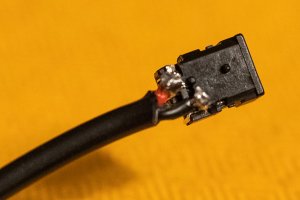
And finally, the moment of truth. I popped it into my
EOS R, and sure enough...
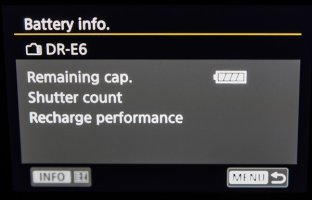
The camera recognizes it as a DR-E6, not an LP-E6 battery like the cheap third party dummy batteries. So therefore, hopefully, the camera will stay on as long as it's plugged on, not shut off after a while like it does with the third party AC adapters.
So what does this tell us? As I thought, the actual determining factor as to whether or not the camera recognizes the AC power as a true AC adapter or just a battery lies within the "DC coupler" (dummy battery) itself, not the AC to DC converter that's powering it. So if you need to run your camera for a long time, you should buy a genuine Canon DR-E6. But it's not necessary to shell out the money for the ridiculously overpriced ACK-E6N, you can use any 8V 3A AC adapter with this connector spliced onto the end to allow it to power the Canon DR-E6.
Hope someone gets some good use out of this info. It really pissed me off that Canon charges so much for a simple AC adapter (that isn't even in stock anywhere right now), and then also puts a weird connector on it to make it harder to use another similar AC adapter in place of theirs. So, there you go, you don't need to throw any more money at Canon for their pricey AC adapter.






